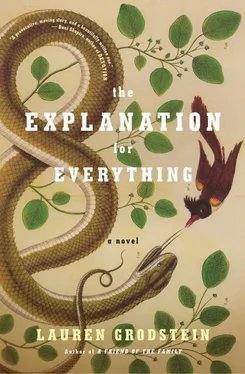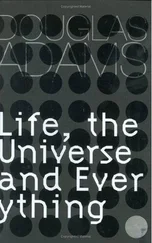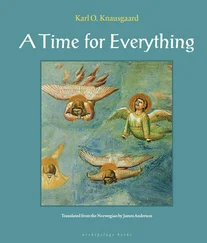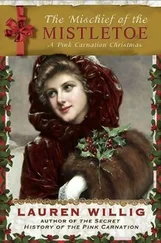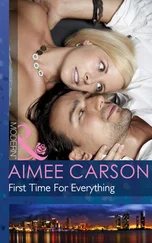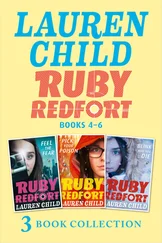“What about art?” Melissa said.
“What do you mean?”
“You know, music, art. Classical music is often religious—Bach’s works, Handel’s Messiah. And if you look at old paintings they’re all like Jesus and the Madonna over and over again. I took art history at Salem County,” she said. “It was impossible to tell all those old paintings apart. But you can’t look at them and not think about, you know, the spirit.”
His honeymoon had been to Paris, a whole day at the Louvre. The Renaissance galleries: Botticelli, Raphael, Caravaggio. An entire afternoon, hand in hand with Lou, admiring the slope of the pregnant Madonna’s belly, or the baby Jesus with the receding hairline. And the rolling Tuscan hillsides standing in for ancient Bethlehem, and the sheep, and John the Baptist, and the thin halos painted on in real gold. The altarpieces and the triptychs and the miniatures. An afternoon in Lou’s hand.
They were not going to talk about this. His hand in Lou’s. He leaned forward to kiss Melissa, and this time he did not let her pull away.
THE FOLLOWING MONDAY, UPS delivered Rosenblum’s manuscript in an envelope labeled Briggs Watson, Attorneys-at-Law. The note attached: “As per your request.” Andy snickered out loud with joy. Rosenblum!
The manuscript itself was surprisingly thin, fifty-odd pages, and he wondered if this was just an excerpt, or if Rosenblum was planning to reemerge on the world stage with a brief manifesto, the kind of thing that could be sold cheaply and attractively packaged at the check-out counter at Barnes & Noble. Not a bad idea, Andy thought. Take back the world a little at a time.
Andy shook out the envelope to see if the lawyer had included any contact information for Rosenblum, an e-mail address, but there was nothing. He went online, looked up Briggs Watson, Attorneys-at-Law, found a simple website, the kind of thing he could put up in fifteen minutes. No phone number. There was an address, though—the same address as the one on Rosenblum’s envelope, a PO box in Manhattan. Jesus, Rosenblum. This was the best he could do for a lawyer?
Well, surely there was an office somewhere. Maybe after the semester was over, Andy would take the Greyhound to Manhattan, do a little investigating. He suddenly wanted very much to talk to Rosenblum, to tell him all he was doing with his research, to tell him about his failures to get the mice to behave the way he wanted. To tell him that, despite the recalcitrant mice, he was finally doing well again, after all these years.
He would not, of course, mention Melissa, or God.
The manuscript, “Death and Immortality,” was typed out hastily and covered in cross-outs and handwritten interjections as per Rosenblum’s fiendish style—the old man thought much faster than he could type, and although he occasionally dictated to typists, he was paranoid that one of them would steal his ideas, hand them to a competing biologist, a graduate student. And he couldn’t write longhand, since he was unable to read his own handwriting. So he worked like this on one of the new Apple computers he bought every other year, a mishmash of type and script, marginalia, scratch marks, coffee rings, very occasional drops of what looked to be blood. Andy wanted to breathe in the paper, to smell it—and then he realized he was alone in his office, so what the hell. He picked up the manuscript and held it to his nose, but it only smelled like paper, and a little dust.
He started on the first page.
Death and Immortality
Henry Rosenblum
Professor Emeritus of Evolutionary Biology,
Princeton University
When I was sixty-one years old, a time in a man’s life when certain things become apparent (and to deny these apparent things is to make yourself a fool), I met a young girl who was unlike anyone I had met before. She was capable, calm, and without the desperate need for affirmation that I find so irritating in young people (in most people). She was able to see what was true.
Her name was Anita Lim, and her parents were immigrants from Korea. Most of what I know about her family I learned after her death, although she did tell me some things about them. Her father’s family had been separated during the Korean War, and she had several uncles and cousins starving somewhere north of Pyongyang. She did not dwell on this, as she resented how lucky these accidental circumstances made her feel. But she mentioned it. She also had a brother whom she did not like to talk about, and parents whom she respected and avoided because she felt, by simply being who she was, she disappointed them. I was certain this couldn’t be true, although I met her parents both before and after her death, and it’s true they seemed ignorant and hostile. But what I know of Korean parents is informed entirely too much by stereotype; I will admit this now. Anita’s parents fit that bill.
Upon arriving as a graduate student at Princeton University in 2001, the girl attached herself to a project of uncovering the origins of DNA. Specifically, this meant she worked on sequencing the genomes of the viruses that might have participated in the building of the first DNA molecules on the earth over a billion years ago. Although she worked, nominally, with a team of viral geneticists, she spent most of her time in the laboratory by herself. Solitary and ceaseless, she made more progress into the origins of life than any scientist I had previously met. It wasn’t just me who thought so. Any scientist capable of understanding what she was up to found himself almost unnerved at her youth and her brilliance. She won the Kent-Hughes prize, a prize usually given to scientists at the peak of their careers, when she was twenty-three years old.
I firmly believed that Anita would have solved one of the quandaries I’ve been waiting for someone else to solve my entire life. I believed, given enough time, that Anita would have exposed the foundation of life on earth.
Now, it is clear to me that very soon somebody will tell us how, and under what conditions, this once-sterile earth became fertile. We already know that carbon molecules began to join with oxygen molecules to create the first organic compounds over a billionfold years ago. The question is how this led to DNA, the building block of human life. But some scientist, somewhere, will figure this out soon. He will tell us where DNA came from. For we already know that once DNA existed, it began evolving, according to the processes that Darwin made clear, and once it began evolving, we became inevitable. We are both lucky and inevitable, was how Anita would put it, if you pressed her, which I did.
I spent most of my working hours with Anita, in those brief years we had together, and occasionally my colleagues would tease me about being in love with her in a romantic way. This is, I think, because in my younger days I was rather roguish. (I was married four times for a cumulative six years.) I’d slowed down by the time I was in my sixties, finding that a good night’s sleep more than replaced whatever pleasure sex used to provide, but I think my colleagues still liked to imagine that I was capable or even interested in seducing a young girl. It is hard for us to see that others are aging and changing around us, because it reminds us that we too are aging and changing. I am not the first to notice this, of course. If I am still roguish then you are still youthful, etcetera.
Anyway, I was not in love with Anita. I think, in fact, she frightened me. I think I was frightened of her capacity to find the truth. Regardless, I liked her, if one can like such a quiet and solitary person, and as I said I worked closely with her. She was interested in Darwinian evolution, and we talked about the subject often, as Darwinian evolution has been the subject I have studied most of my life, and in so doing have developed whatever expertise I have developed.
Читать дальше
